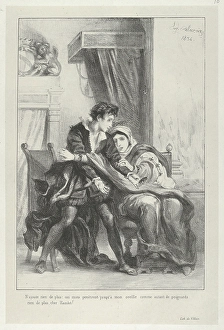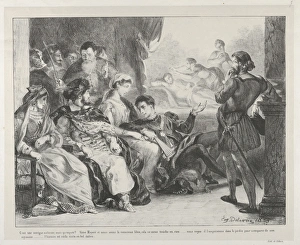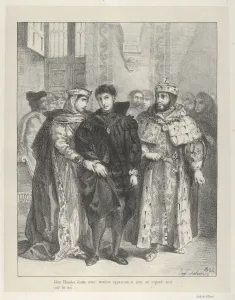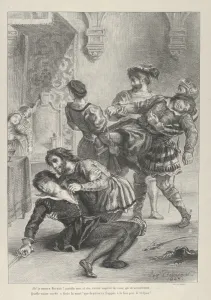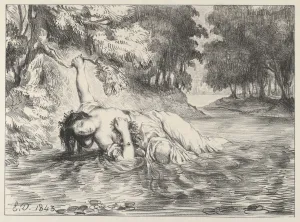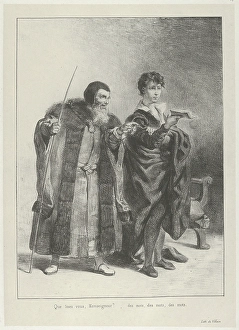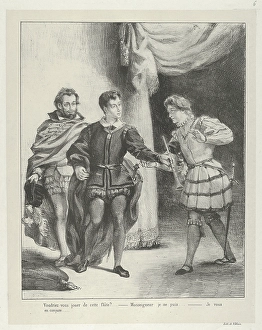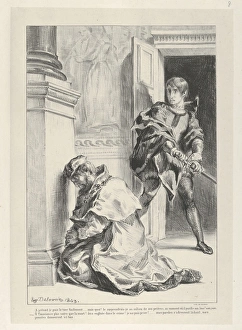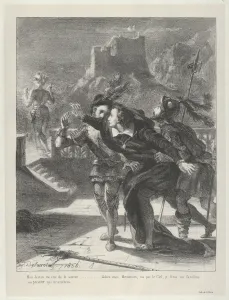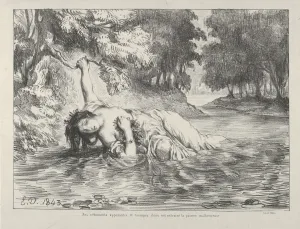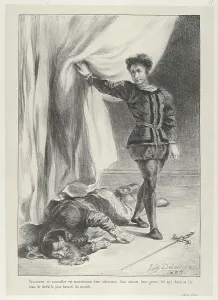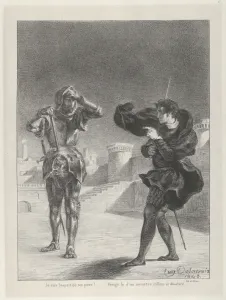Shakespeare Developed Collection
"Shakespeare Developed: A Visual Journey through Hamlet's Tragic Tale" Step into the world of Shakespeare's iconic play, Hamlet
All Professionally Made to Order for Quick Shipping
"Shakespeare Developed: A Visual Journey through Hamlet's Tragic Tale" Step into the world of Shakespeare's iconic play, Hamlet, as depicted in a series of captivating lithographs from the 19th century. Each artwork portrays key moments and characters, offering a unique glimpse into this timeless tragedy. In the first lithograph titled "Murder Polonius, " created between 1834-1843 in its second state, we witness the shocking demise of Polonius at the hands of an unknown assailant. The artist masterfully captures the tension and chaos surrounding this pivotal event. Moving forward to another lithograph from 1834 entitled "Hamlet Queen, " now in its third state four, we observe an intense interaction between Hamlet and his mother. Their strained relationship is palpable as they confront each other amidst conflicting emotions. One cannot ignore the famous scene portrayed in "Shakespeare Hamlet act 3 scene 2. " In this lithograph, dating back to an unspecified year within that period, Hamlet meticulously arranges his plan for revenge against those who have wronged him. His cunning nature shines through as he strategizes his next move. The lithograph named "Queen Tries Console Hamlet" takes us back to 1834 when it was created during its second state. Here we witness Queen Gertrude attempting to comfort her grief-stricken son after witnessing a disturbing play within a play that reveals dark secrets about their family. Death looms large throughout these artworks; one such portrayal can be found in the hauntingly beautiful lithograph called "Death Ophelia. " Created in 1843 during its second state three times over, it captures Ophelia's tragic demise with great sensitivity and melancholy. Polonius makes another appearance in a separate piece titled "Polonius Hamlet. " This particular work dates back to somewhere between 1834-1843 during its second state.

